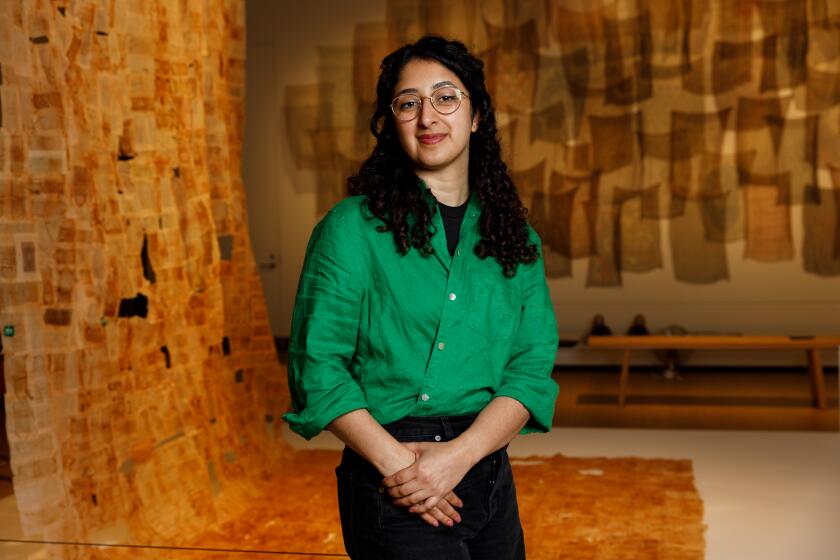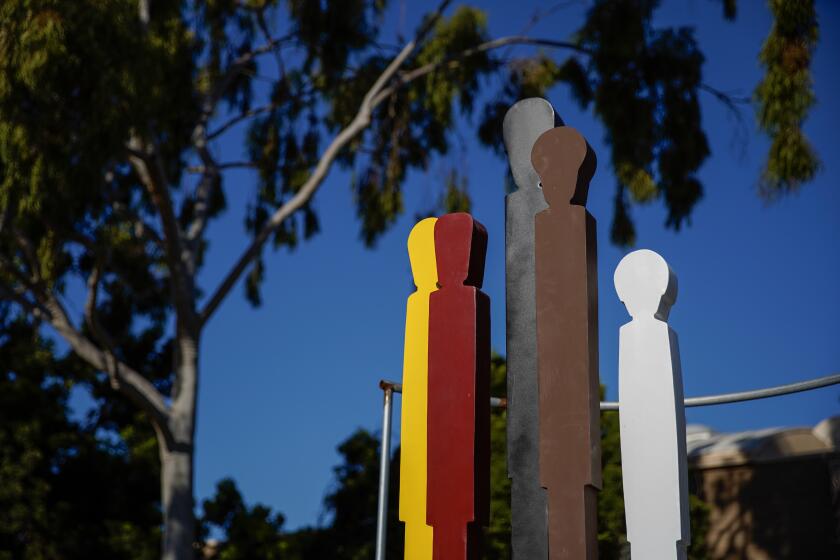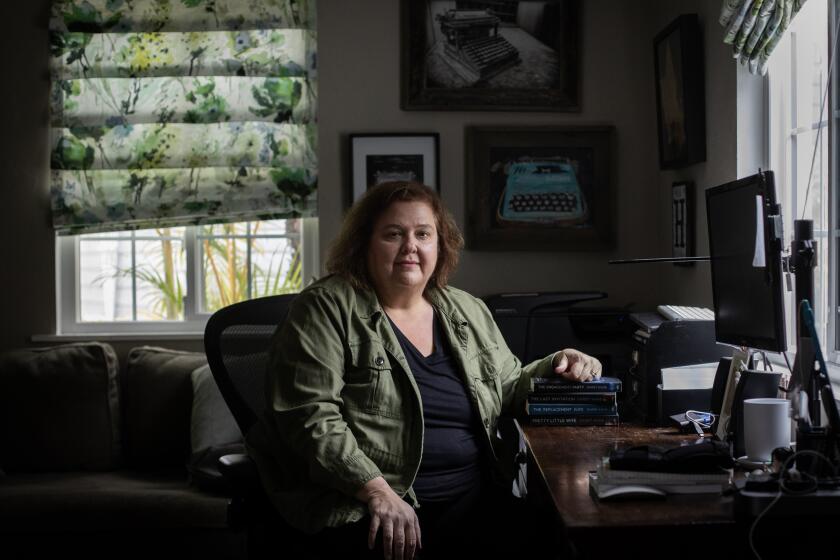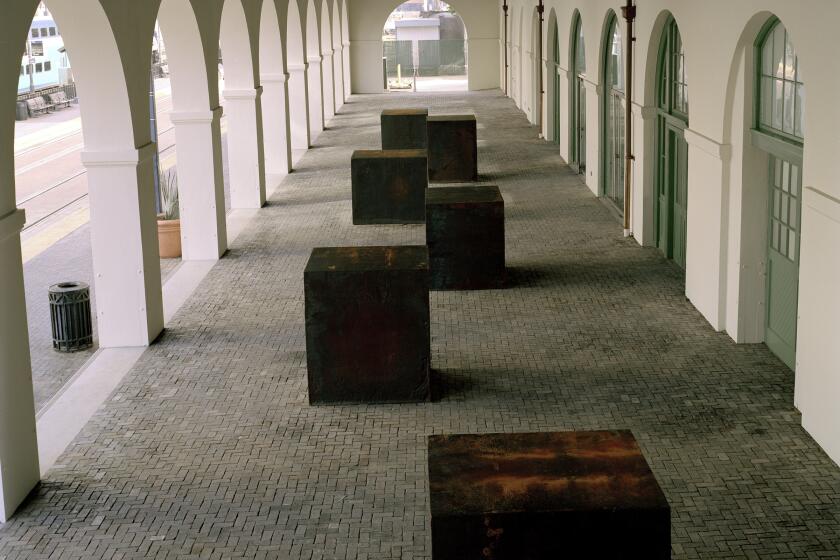Meet artist Kristi Lin: bringing a natural balance
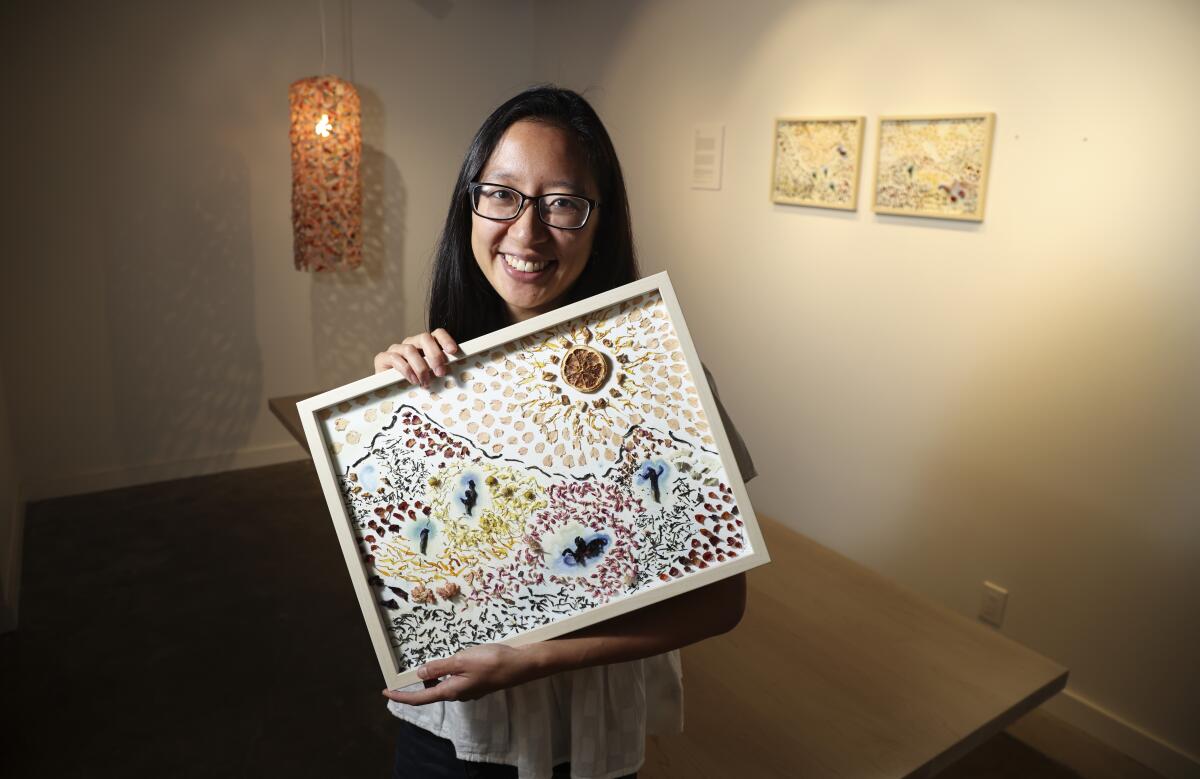
Local artist and landscape designer Kristi Lin channels traditional techniques and elements into something all her own
Kristi Lin grew up in La Jolla. So, on the surface, one might assume that living among all the natural elements that make the neighborhood so idyllic — the cliffs, pines, beaches, etc. — would have been the catalyst for Lin’s love of landscape architecture. But when asked about it, she pauses, as if reaching desperately for an answer. It doesn’t come.
“Actually, to really answer that question, I know exactly the space that got me into landscape architecture,” Lin says.
She goes on to say that, yes, growing up in San Diego and La Jolla was instrumental in exposing her to an unparalleled natural beauty. For Lin, however, it was a trip to the Manzanar National Historic Site that awed her to a point to where she said to herself “this is real.”
“I went there on a civil rights pilgrimage in college,” says Lin, who at that time was an undeclared student at the University of California Davis. “It really was a life-changing experience.”
Lin goes on to say that while she was heavily involved in the Japanese-American community in San Diego, it wasn’t until she visited Manzanar, a former concentration camp for Japanese-Americans during World War II, that she felt a connection to what landscape design could bring to an outdoor space. In the case of Manzanar, a site nestled in between the bleak environs of Death Valley and the lushness of Sequoia National Park, Lin says the experience “made it real” for her.
“Walking on the same paths that they walked on and feeling the wind and the sun,” Lin says. “It felt like getting a sandblast to the face. And seeing the barbed wire around you. It was so moving just to be really moving through that space. I really felt a sense of what it might have been like if it had been me there.”
Lin researched further and found that many of the designs at the Manzanar site, from restoring old buildings to creating pathways featuring natural vegetation, were facilitated by landscape architects working for the National Park service. She went back to UC Davis and declared Landscape Architecture as her major.
“After that, I was like, ‘I want to go into that field,’ because it just changed the whole way I related to my cultural heritage,” Lin recalls.
Landscape compositions
Like many local artists, Lin grew up knowing she had artistic inclinations, but was worried about the financial impracticalities that come with being a working artist. In the field of landscape architecture, she says she found that balance; a profession that allows her to be creative and inspired while also paying the bills. Since graduating from UC Davis in 2017, she’s become a licensed landscape architect, but has also made time to work on more personal projects.
“I really like historic sites, but I wanted to interpret the past in a new, artistic way,” Lin says.
Such is the case with “Borrowed Scenery,” an exhibition she opened at the Japanese Friendship Garden in Balboa Park earlier this year. Using the concepts behind ancient landscaping techniques of shakkei (Japanese) and jièjǐng (Chinese), Lin created an immersive, walkthrough experience that used up-cycled materials like old clothes and food waste (to make dyes) to fashion hanging, see-through trellises. The pieces gave the garden an almost maze-like feel, while the viewer could still see the natural elements of the garden through the screens.
“What I really wanted to explore was that these old traditions aren’t dying, they’re just changing,” says Lin, herself a fourth generation Japanese American and third generation Chinese American. “So the materials would be changing over time. The whole idea of ‘borrowed scenery’ is that it’s this technique in garden design where the designer takes a distant view. For example, they’ll take a faraway mountain and incorporate it into their landscape composition. So they might frame a mountain and have rocks and trees around that view.”
In the case of the Japanese Friendship Garden, the screens are the composition framing the decades-old plants and trees of the garden. For Lin, the metaphor here is that future generations aren’t losing touch of the culture from which they originally came from, they’re just building a new design around ancestral elements.
“It’s like a lot of the culture of older Japanese Americans and who immigrated here in the early 1900s, that’s like borrowed scenery to me,” Lin says. “I live now in the 21st century and their culture is still important and part of my life, but it’s a scenery that I’m framing with what’s around me.”
Lin has found other ways to put her own spin on traditional practices. Her most recent art shows, “Blend,” which will be up through the end of the year, are at the two locations of Paru Tea in La Jolla and Point Loma. For the two spaces, Lin created what appear to be vivid watercolors, but are actually Japanese-inspired landscapes made from blended tea leaves (the clouds are made from cherry blossom petals and the sun is a dried orange, for example).
“When I was doing research on Japanese landscape painters, I found they weren’t even trying to be accurate with what they were painting,” Lin continues. “It was all about how they felt about the place. So for a while, I was really focused on trying to convey a specific place, but then I was all about leaving it up to chance and seeing what happens.”
Looking ahead
Next up, she’s teaming up with the Parkeology public arts project for two park design and sculpture pieces, one at the Mira Mesa Community Park and the other in Seattle.
The Seattle project will emphasize accessibility via a gateway sculpture that will include small cavities inspired by the holes woodpeckers create.
The Mira Mesa project, a collaborative effort with local arts organization the AjA Project, will feature a steel sculpture and mural that will serve as something of an amphitheater-like structure for gatherings and picnics. The overhanging structure will include varying shapes, inspired by the stories of the community, cutout of the top and resulting in what Lin calls a “collage of silhouettes” from the sun being cast to the ground.
Both projects are expected to begin and be completed in 2022.
“I’ve really enjoyed the Mira Mesa project, because we really did get a lot of the community to contribute stories. It will be a nice collage, much like the community itself,” says Lin, referring to the diversity of the community.
And while Lin continues to work at her day job as a landscape designer and project manager at a local firm, she says she’s found a “nice balance” between the professional and personal. That is, a place where she has a job that allows her to harness her creative skills in order to create something for someone else, but also a place where she has time to work on her own practice of honoring traditional methods through a present-day outlook.
“This year was really cool. It really went from nothing to ‘oh, I really can do art. “I love all the projects at my job, but I do want to make stuff that isn’t for someone in particular; to explore ideas that aren’t for a particular project,” Lin says. “The middle ground is the place I like.”
Meet Kristi Lin
Age: 27
Born: San Diego
Fun fact: Early in her career, Lin says she found a hero in landscape architect/artist Maya Lin (no relation), who is most famous for designing the Vietnam Veterans Memorial in Washington, D.C. when she was a 21-year-old student at Yale.
Combs is a freelance writer.
Get U-T Arts & Culture on Thursdays
A San Diego insider’s look at what talented artists are bringing to the stage, screen, galleries and more.
You may occasionally receive promotional content from the San Diego Union-Tribune.

